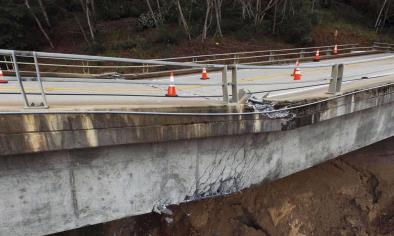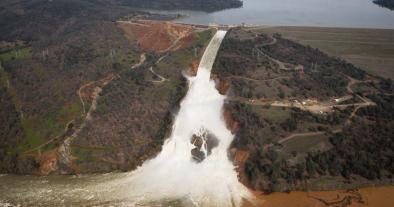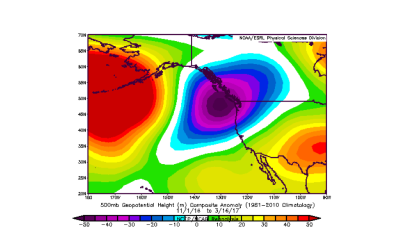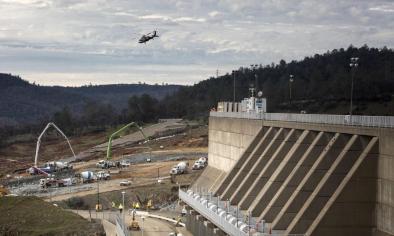Extreme Runoff Generation From Atmospheric River Driven Snowmelt During the 2017 Oroville Dam Spillways Incident
Study key findings
- The February 2017 atmospheric river sequence that caused flooding and the Oroville Dam failure, while intense, was not extraordinary in terms of the amount of rain and snow it delivered. The melt took place because of unusually warm and wet conditions during the atmospheric river, and it increased water available for runoff by 37 percent over rain alone, straining the capacity of California’s second-largest reservoir.
- Snowmelt in the Sierra Nevada mountains above the reservoir was the heaviest on record at many locations.
Author quotes
Our findings suggest that without the unusual warmth that caused extreme snowmelt from the atmospheric river, the inflows to Lake Oroville would have been less and the situation around the spillway failures may have been less critical.
Brian Henn, study lead author and former researcher at the Center for Western Weather and Water Extremes (CW3E) at Scripps Oceanography
We know that climate change is expected to increase the intensity of storm events in the Sierra Nevada, including extreme melt of deep mountain snowpack. With our Oroville Dam case study, we highlight an example of potential threats to public safety and infrastructure associated with a warmer and more variable climate.
Keith Musselman, University of Colorado researcher and study co-author
Abstract
In February 2017, a 5‐day sequence of atmospheric river storms in California, USA, resulted in extreme inflows to Lake Oroville, the state's second‐largest reservoir. Damage to the reservoir's spillway infrastructure necessitated evacuation of 188,000 people; subsequent infrastructure repairs cost $1 billion. We assess the atmospheric conditions, snowmelt, and runoff against major historical events. The event generated exceptional runoff volumes (second largest in a 30‐yr record) partially at odds with the event precipitation totals (ninth largest). We explain the discrepancy with observed record melt of deep antecedent snowpack, heavy rainfall extending to unusually high elevations, and high water vapor transport during the atmospheric river storms. An analysis of distributed snow water equivalent indicates that snowmelt increased water available for runoff watershed‐wide by 37% (25–52% at 90% confidence). The results highlight potential threats to public safety and infrastructure associated with a warmer and more variable climate.
Related Content






